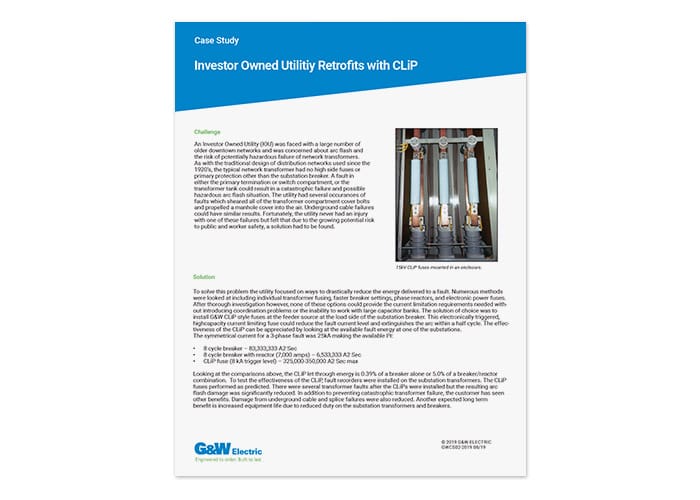CHALLENGE:
An Investor-Owned Utility (IOU) was faced with a large number of older downtown networks and was concerned about arc flash and the risk of potentially hazardous failure of network transformers. As with the traditional design of distribution networks used since the 1920’s, the typical network transformer had no high side fuses or primary protection other than the substation breaker. A fault in either the primary termination or switch compartment, or the transformer tank could result in a catastrophic failure and possible hazardous arc flash situation. The utility had several occurrences of faults which sheared all of the transformer compartment cover bolts and propelled a manhole cover into the air. Underground cable failures could have similar results. Fortunately, the utility never had an injury with one of these failures but felt that due to the growing potential risk to public and worker safety, a solution had to be found.
SOLUTION:
To solve this problem the utility focused on ways to drastically reduce the energy delivered to a fault. Numerous methods were looked at including individual transformer fusing, faster breaker settings, phase reactors, and electronic power fuses. After thorough investigation however, none of these options could provide the current limitation requirements needed without introducing coordination problems or the inability to work with large capacitor banks. The solution of choice was to install G&W Electric CLiP® style fuses at the feeder source at the load side of the substation breaker. This electronically triggered, high-capacity current limiting fuse could reduce the fault current level and extinguishes the arc within a half cycle. The effectiveness of the CLiP can be appreciated by looking at the available fault energy at one of the substations. The symmetrical current for a 3-phase fault was 25kA making the available I2t:
- 8 cycle breaker – 83,333,333 A2 Sec
- 8 cycle breaker with reactor (7,000 amps) – 6,533,333 A2 Sec
- CLiP fuse (8 kA trigger level – 325,000-350,000 A2 Sec max
Looking at the comparisons above, the CLiP let through energy is 0.39% of a breaker alone or 5.0% of a breaker/reactor combination. To test the effectiveness of the CLiP, fault recorders were installed on the substation transformers. The CLiP fuses performed as predicted. There were several transformer faults after the CLiPs were installed but the resulting arc flash damage was significantly reduced. In addition to preventing catastrophic transformer failure, the customer has seen other benefits. Damage from underground cable and splice failures were also reduced. Another expected long-term benefit is increased equipment life due to reduced duty on the substation transformers and breakers.

